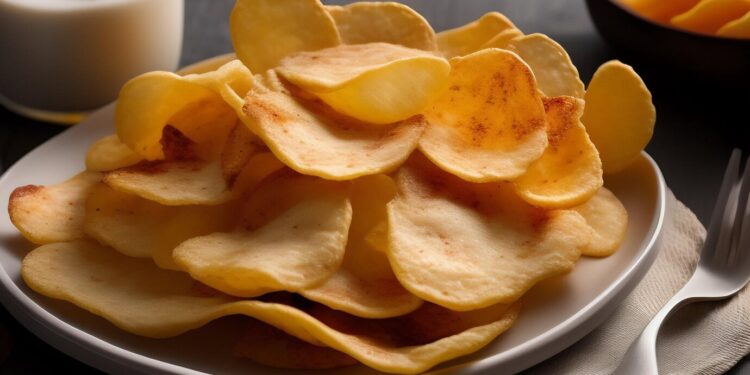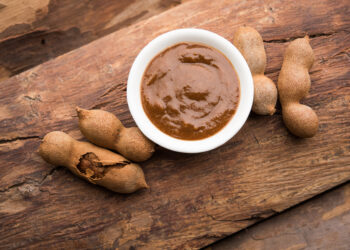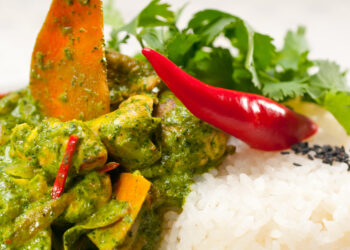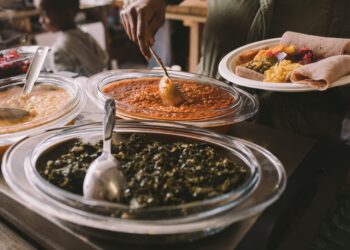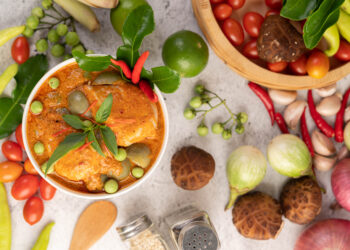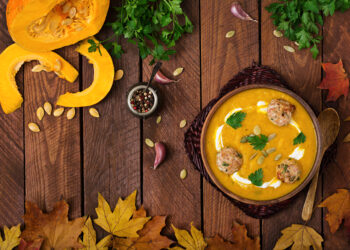The poppadom, also known as “papadum” or “papad,” is a thin, crispy, and flavorful flatbread that has captured the hearts and taste buds of people worldwide. While it’s a beloved accompaniment to Indian meals, its history is a captivating journey through time, reflecting the diverse culinary traditions of South Asia. Let’s delve into the fascinating history of the poppadom:

Ancient Origins: Tracing Back Over Millennia
The roots of the poppadom can be traced back over 2,000 years, making it one of the oldest known snacks in the world. It is believed to have originated in the Indian subcontinent, where early cooks experimented with creating thin, sun-dried bread from lentil and rice flour. These ancient experiments laid the foundation for what would become the modern poppadom.
Regional Variations: A Tapestry of Flavors
One of the remarkable aspects of poppadoms is their regional diversity. Across India, you’ll encounter a wide array of poppadom variations, each with its unique characteristics. While some are crafted from lentil flour, others use rice flour, chickpea flour, or a combination of these ingredients. The addition of spices such as cumin, black pepper, and ajwain further enhances the flavor, creating a sensory journey for the palate.
Culinary Significance: A Staple in Indian Homes
Poppadoms are not just a snack; they are an integral part of Indian cuisine and culture. They hold significant culinary and cultural importance and are prepared during special occasions, festivals, and traditional feasts. In some regions, they even find a place of honor in wedding banquets, symbolizing tradition and celebration.
Evolution of Cooking Methods: From Sun-Drying to Modern Techniques
In their early days, poppadoms were traditionally sun-dried. Cooks would spread a thin paste of lentil or rice flour mixed with spices onto mats and leave them in the sun to dry. This age-old method required patience and favorable weather conditions. Over time, as cooking techniques evolved, new methods emerged. Today, poppadoms can be prepared through deep-frying, roasting over an open flame, or simply microwaving, providing convenience without compromising on flavor.
Global Popularity: A Snack Loved Worldwide
While poppadoms are a quintessential part of Indian cuisine, their popularity has transcended borders. These crispy delights are now enjoyed by people across the globe. They have become a common appetizer in Indian restaurants and are often served with a variety of chutneys, tantalizing the taste buds of both enthusiasts and newcomers to Indian flavors.
Commercial Production: Meeting the Demand
The increasing demand for them has led to commercial production and distribution. Today, you can find pre-packaged poppadoms in grocery stores, making them easily accessible to anyone interested in savoring their taste and crunch. These commercial varieties offer convenience without compromising on quality.
Modern Variations: Expanding Flavor Horizons
While the traditional lentil and rice-based poppadoms continue to be beloved classics, modern variations have emerged. These variations include flavored poppadoms that incorporate ingredients such as black pepper, garlic, spinach, and more. These contemporary twists cater to diverse tastes and preferences, showcasing the culinary adaptability of this timeless snack.
In conclusion, the poppadom is not just a crispy snack; it’s a symbol of the rich and diverse culinary heritage of South Asia. Its history reflects centuries of creativity and adaptation, and its global popularity continues to grow. With its regional diversity, culinary significance, and ever-expanding flavor horizons, it remains a cherished and versatile food item enjoyed by people of all backgrounds, adding a delightful crunch to meals and a touch of tradition to every bite.


